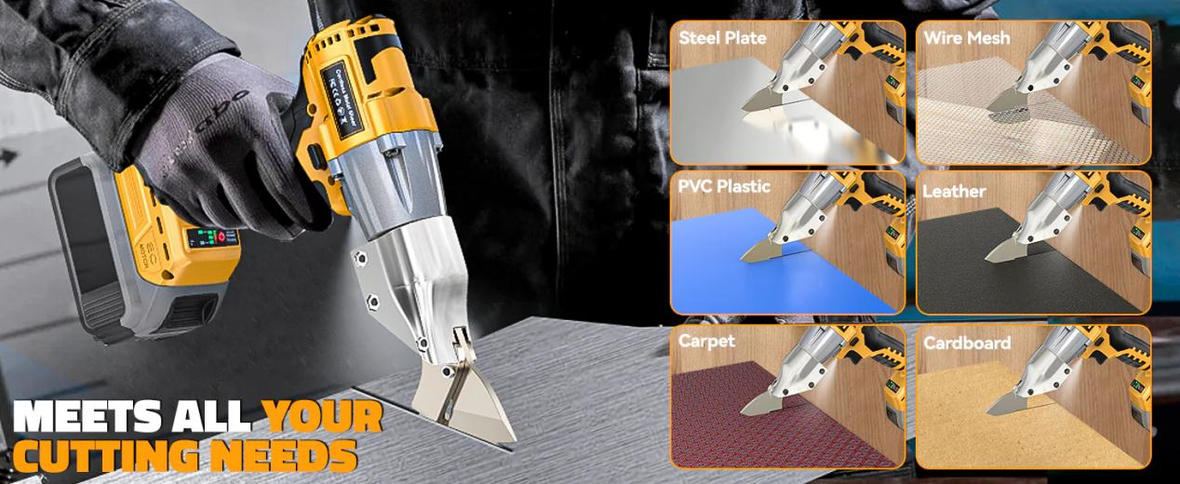
TOP POWER SHEARS BUYING GUIDE: HOW TO CHOOSE THE BEST METAL CUTTING TOOL FOR YOUR NEEDS
Power shears are essential tools for metalworkers, DIY enthusiasts, and professionals in construction or automotive repair. Choosing the right power shears can significantly impact efficiency and precision. This buyer’s guide covers key factors to help you can select the best sheet metal shears for your projects and ensure clean, distortion-free cuts every time.
What to Consider When Buying Power Shears
To get power shears that are efficient, durable, and versatile to use, you need to consider the following factors.
Intended purpose
Not all power shears work for every job. Some can handle different materials and tasks, while others are designed for specific uses. For example, roofers need different shears than auto repair technicians. Before buying, consider what you'll mainly use them for.
Type
Electric power shears come in two main types: corded and cordless. Considering each has its own set of pros and cons, inspect to determine which one would work best for you.
- Corded power shears: They are plugged into an electrical outlet, typically requiring 110–120 volts with a 4–6 amp motor, making them suitable for heavy-duty cutting tasks like stainless steel sheets (18–22 GA).
- Cordless power shears: They run on rechargeable or replaceable batteries, offering greater portability and ease of use but with slightly less cutting power, handling materials up to 14 GA, which makes them ideal for beginners and lighter DIY projects
Gauge rating
The gauge (GA) rating tells you the maximum metal thickness a power shear can cut. The lower the number, the thicker the metal it can handle. 14-16 GA is best for thick metals (e.g., steel plates, auto body work). 18-20 GA is good for medium-duty sheets (e.g., HVAC, roofing). 22+ GA is used for thin metals (e.g., aluminum flashing, ductwork).
Blade type
The blade is just as crucial as the motor in power shears since it directly contacts materials during cutting. For optimal performance, blades must be durable enough to withstand repeated use, razor-sharp to deliver clean and smooth cuts, and properly aligned to ensure straight, precise cuts every time. These three qualities work together to maximize cutting efficiency and prolong the tool's lifespan.
Should You Choose Double-Cut Shears or Single-Cut Shears?
Beginners often get confused between double-cut and single-cut power shears, mistaking them for the number of blades. Read on to learn about the differences between differently cut shears.
Like your regular scissors, single-cut shears feature a moving blade against a fixed blade attached to the shear head. The moving blade cuts the metal sheet as it slides against its surface onto the fixed blade. Although single cut shears do not produce any waste or dust when cutting, they may distort or bend the edges of the metal sheet.
Double-cut shears
Double-cut shears have two distinctive cutters that move against each other to slice through a metal sheet. Unlike its counterpart, a double-cut shear leaves behind residue but keeps the uniformity of the metal structure from any distortions.
Important Tips To Apply When Using Power Shears
Mark clear and accurate lines on the metal sheets showing the areas you need to cut through for guidance. Keep your eyes 1/2 inch ahead of the blade to improve your accuracy and precision.
In case you are a beginner, make sure you practice enough with the power shear before using it on your project. Keep the blade always sharp.
Blunt and thick blades can not only minimize efficiency but may also deform the metal sheet as well. Take necessary preventive measures before initiating your work.






